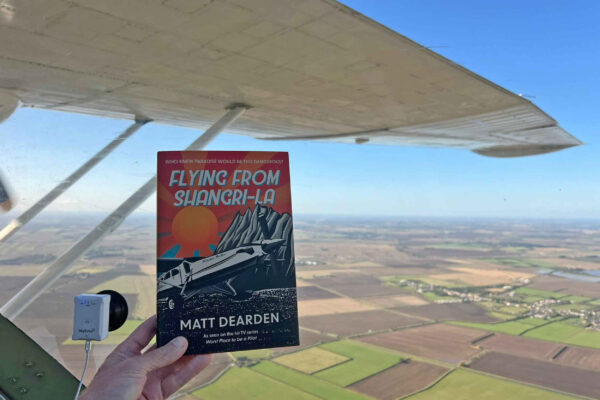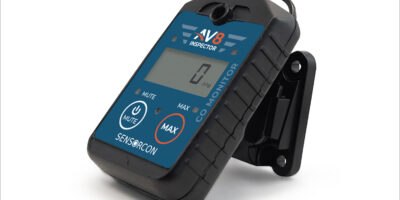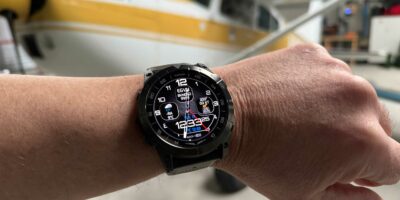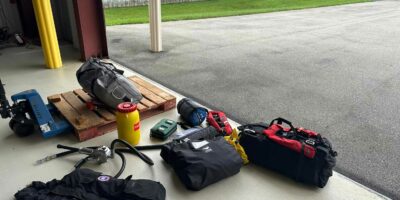Somehow I’ve accumulated no fewer than four GoPro cameras of varying vintages, but frankly they rarely see the light of day. They’re too light to make good door stops, too expensive to chuck out and too friggin’ complicated to use without setting aside an hour to raise my blood pressure as I grapple with the digital labyrinth of options.
So, the Garmin VIRB Ultra 30 is a bit of a revelation. At its most basic it’s one button push to turn it on, another button push to take a still picture or one simple lever action to start shooting a video. It’s really that easy.
The VIRB is a lot more besides. For the technically minded it shoots 4k video at 30fps (frames per second), 2.7k video at 30 or 60fps and there are slow motion modes that work at the lower resolutions including the absolutely perfectly acceptable for most things 1080 (120fps if you are interested). You can shoot single still images, or a burst of 60 of them in just two seconds, and if time-lapse is your kind of thing you can do that too.
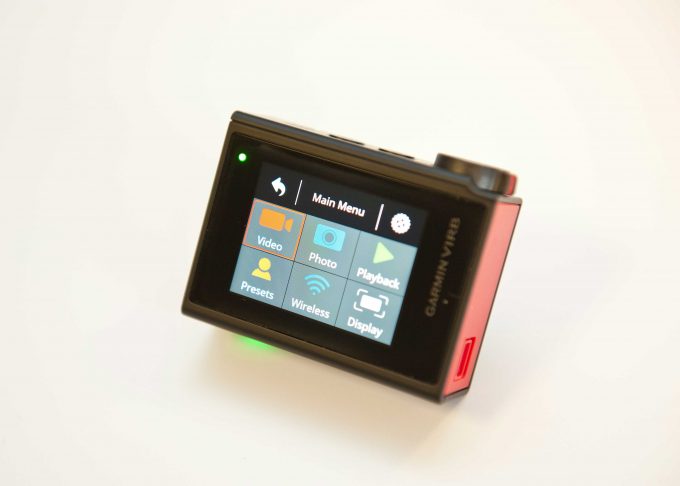
The VIRB’s touchscreencan be used to frame and view footage, and access the simple menus
All that would be pretty useless if accessing the features and options was at all difficult, but the VIRB comes with a colour touchscreen (that even works when it is inside its waterproof case) through which you can access all of the menus. If you would like to follow a more complicated path to top-quality images, both still and video modes have a subset of pro settings that you can enable and fiddle with, giving you control over exposure compensation, white balance, sensitivity, spot metering, etc.
If pressing a button is inconvenient, you can enable voice control (honestly, it’s a simple menu option) and then talk to the camera to tell it to either ‘take a photo’, ‘start recording’, ‘stop recording’ or ‘remember that’ if you want to tag a specific moment. Maybe it didn’t like my voice, but I didn’t manage to get the voice activation function working particularly well, even in a quiet room (people did wonder what I was up to), but as most pilots will either use the VIRB when mounted externally or in a loud cockpit, the lack of predictability is probably not that serious.
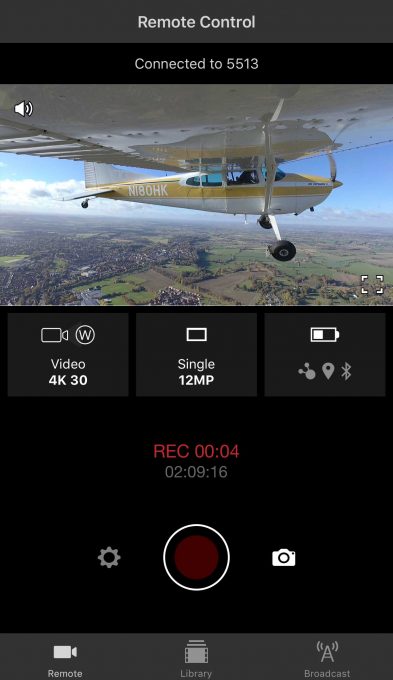
The VIRB app makes remote control of the Ultra 30 easy
Happily there are a couple of other options that will let me remotely control the camera more reliably than shouting at it. I downloaded the VIRB app (it’s available for iOS or Android) and connected it to the camera through its WiFi network; you can also use the Garmin Pilot app if that’s your navigation and planning app of choice, or you can pair the VIRB with your Garmin D2 watch if you happen to have one of those. It’s a simple process, and I managed to get the little VIRB paired with an iPhone, an iPad and a Garmin watch in under five minutes.
Easy to control
To test the camera I needed a way of attaching it to an aeroplane, and while the CAA (and soon EASA) have a slightly more enlightened view of these things these days, the FAA has an even simpler solution, which to paraphrase says ‘don’t put it anywhere stupid, and make sure it doesn’t fall off or you’ll be in trouble’ – happily that big box of GoPro mounts came in very handy as Garmin have been sensible enough to make the mounting systems compatible.
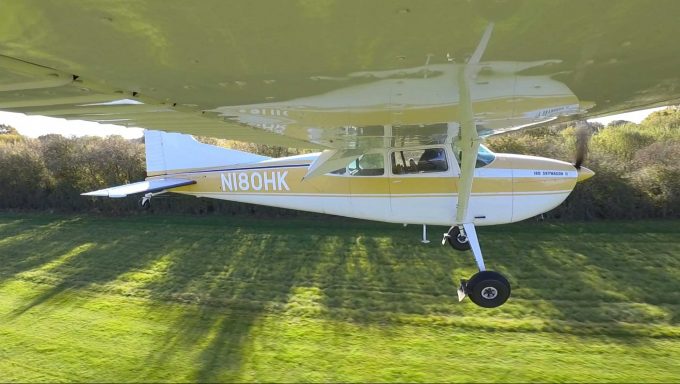
A still from some VIRB video demonstrates the great exposure control
I had a go with one 3M VHB (Very High Bond) pad under the wing, and then a bar mount on the tailwheel stinger. If you aren’t shooting in full 4k resolution there’s an image stabiliser setting that you can enable. In flight it was easy to turn recording on and off or to shoot stills. If you are planning a long flight and you are worried about battery life (said to be in excess of a couple of hours, which I think is ambitious) you can set the camera to wake remotely and to ‘rest’ in low power mode when not shooting.
Even with the stabilisation mode enabled you have to have a very solid mount as any vibration (say of the aeroplane’s skin) will not make for high quality viewing – for me the stinger mount worked best, but even the wing mount worked well in stills mode.
Should you find yourself with the iOS app, a good mobile signal and if you are not too concerned about using your mobile when flying, then you can set the VIRB to livestream to YouTube via your telephone, although I didn’t manage to test that function in flight for various reasons.
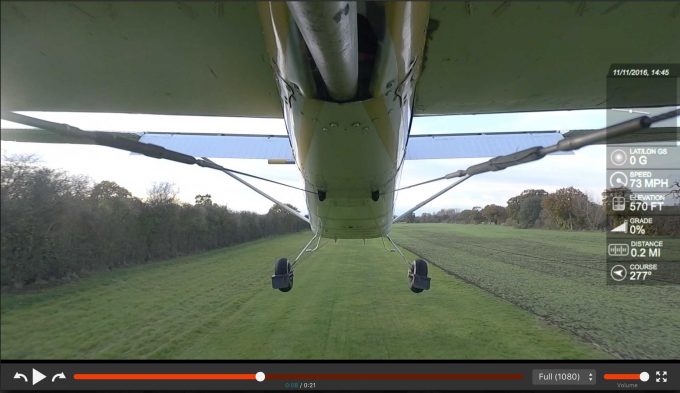
G-Metrix data capture means you can add things like speed, altitude and bearing to your video
Videos and pictures can be edited in, amongst other things, Garmin’s free VIRB Edit software which is where you’ll discover a nifty feature called G-Metrix. This is data captured by the camera when shooting and includes things like speed, altitude, g-force, bearing, etc. The software allows you to overlay your video with some or all of this information in various layouts, the sharp-eyed may notice that my ‘g’ is reading 0, which it stuck at through the entire flight. I’ve seen it working properly on other videos, but have yet to figure out why it wasn’t working properly during these flights.
The VIRB Ultra 30 is a great camera. At £370 it’s not cheap, but given that it provides high-quality footage and stills simply, it’s bound to get used a lot more than my desk ornament GoPros, which may never get charged again.
For more information, visit www.garmin.com






